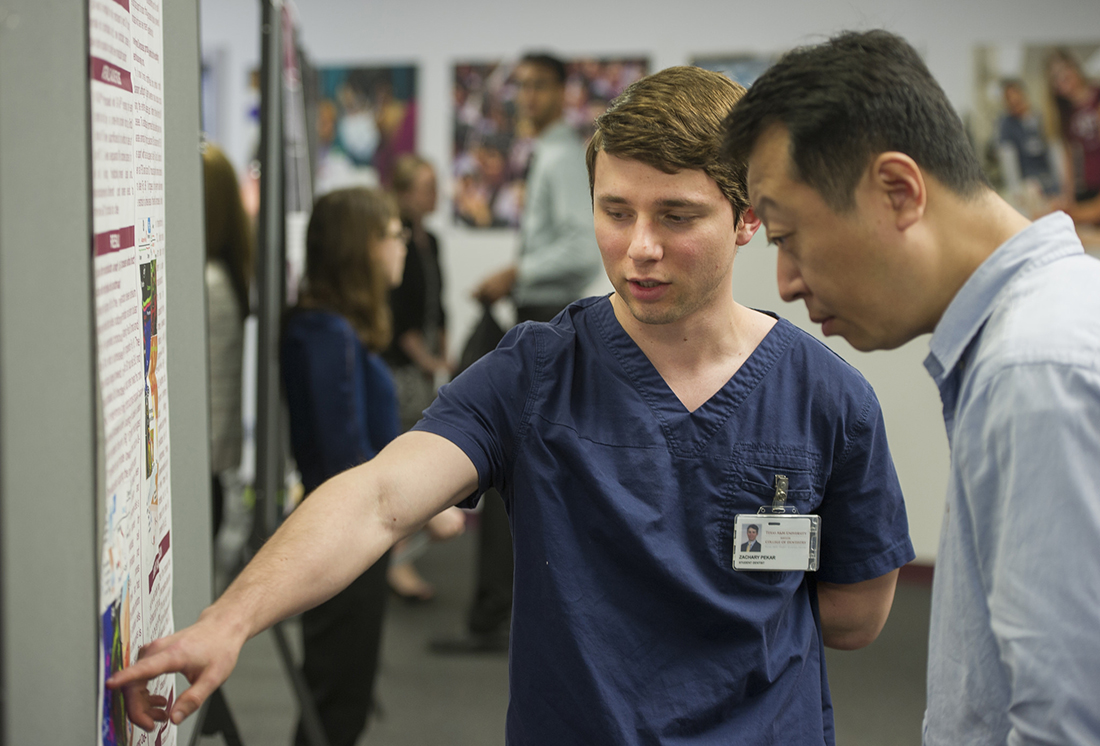Not just one, but two, Hatton Awards for first-year dental student

The stressful part didn’t last long. Months’ worth of research boiled down to those two presentations, each about 10 minutes. It helped that the audience was small: just three judges each time. To get to this point, he had to master his poster presentation, learning how to field impromptu questions from individuals who critiqued his findings with the certainty found only among seasoned experts. Just six dental students in the world make it to this level, and one first-year Texas A&M College of Dentistry student was among them.
Zach Pekar’s efforts fared well during the International Association for Dental Research/American Association for Dental Research annual session, winning him first place in the undergraduate and professional school category of the IADR’s Hatton Competition and second place in the AADR’s subset of the contest. The results mean Pekar’s presentation is considered No. 1 in the international dental research arena among junior trainees in his field.
There’s no doubt that rehearsals organized by biomedical and research/graduate studies faculty Dr. Lynne Opperman, Dr. Bruno Ruest, Dr. Kathy Svoboda and Dr. Larry Bellinger made a substantial impact.
So too, did Pekar’s ability to synthesize complex information and verbalize it in front of an audience.
“Zach is an excellent speaker and knows how to address questions precisely,” says Pekar’s faculty mentor Dr. Jerry Feng, professor in biomedical sciences and assistant dean for research. “That was the key for him to get that award, plus the science.”
The science Pekar was tasked with explaining delves into the development of dentin after birth. Traditionally, it has been thought that epithelial cells must communicate in order for new dentin to continue to form. While this is true in the embryonic stage, Feng’s lab used cell lineage tracing to demonstrate that the cells don’t need continuous communication to form new dentin after birth, filling a crucial knowledge gap regarding postnatal dentinogenesis.

Pekar’s undertakings as a participant in the College of Dentistry’s Predoctoral Student Research Fellowship meant he had to grasp a firm understanding of the project, learn genotyping and assist with imaging.
One moment in particular stands out to Pekar. “I would say looking at the confocal images for the first time while my postdoc, Dr. Chaoyuan Li, explained what was going on, helped clarify everything,” he says.
While Pekar won’t participate in the research program this summer — he applied for the fellowship before even setting foot in his first class at the dental school — he shares his take on what lies ahead for the next dental student researcher in Feng’s lab.
“Next steps could include looking into why these progenitor cells are already activated to become odontoblasts, and looking into what proteins and transcription factors are present and in what concentrations to try and find what’s activating these cells,” he says.
Pekar, along with first-year dental student Kevin Chan, was able to travel to the session through a $1,500 AADR Bloc Travel Grant awarded earlier in the year. He joins the ranks of two of Feng’s Ph.D. students who placed in the master’s and doctoral category of the AADR Hatton Competition in recent years, including second-place winner and dual Ph.D./D.D.S. program alumna Dr. Anika Rodgers ’14, ’16, in 2010, and 2015 alumnus Dr. Yinshi Ren, who clenched the first-place award in 2012.